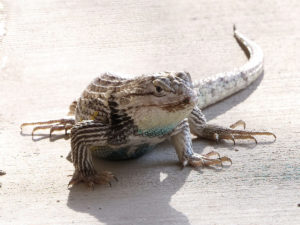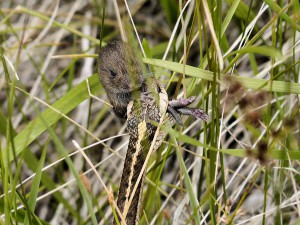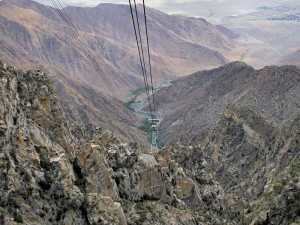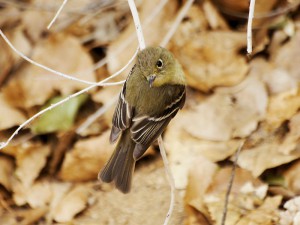It seems like nearly every trip to the California deserts lately, I encounter Desert Spiny Lizards (Sceloporus magister). They are resident in desert habitats across the American Southwest and northern Mexico and can be anywhere in elevation from well below sea level to about 5000 feet.
Continue reading
Category Archives: Reptiles
The Death of Planet Earth
Has mankind really driven the planet to the edge of a catastrophic crash of life? Is greed blinding us to what is right in front of our faces? Some would say maybe these claims are a little too reactionary. Okay, so a bit of Florida gets wet, and maybe some people will have to move inland. Can’t science just come up with new technologies to solve the dilemmas we face? Does industry just need to develop a practical and economical electric car? What would happen if we just did “business as usual”? The claims of doom are a bit extreme and, if we accept them at face value, they are really inconvenient to living our lives. What is science telling us about what is happening right now, what we face in the very near future, and what can be done to avoid it?
Earth really is exceptional. From our naturalist point of view, this planet’s life is unimaginably beautiful and breath-takingly diverse. But it doesn’t take a genius to see that Earth’s abundance and diversity is disappearing. There is a point at which this decline becomes mass extinction, and that point is much closer than you may think. Our own survival is indeed inextricably tied to the health of our world. If we expect science to save us, then we need to listen to what science is telling us. Continue reading
Garter Snake vs. Vole
We’ve written before about the featherless joys of birding (Desert Bighorn Sheep, Western Zebra-tailed Lizard) – those occasions when being out birding puts us in the right place to see other animals doing what they do. So on a recent Sea & Sage Audubon trip to the eastern Sierra Nevada, we were treated to the spectacle of a garter snake that had just captured a vole.
Palm Springs Aerial Tram
During a recent visit from family, we took the famous Palm Springs Aerial Tram up to Mountain Station (see photo of Mountain Station here), the entrance to Mt. San Jacinto State Park. The ride is quite dramatic. It rises 6000 feet from a dry desert bottom to 8516 feet at Mountain Station, in under 15 minutes. The Swiss-made aerial tram cars have a rotating floor so that passengers get the full panorama during their climb without jostling for position. Once you arrive at Mountain Station, you have a choice of activities. You can visit the gift shop, catch a snack or a meal at the Peaks Restaurant. Alternatively, exit into Long Valley and take some of the hiking trails in the state park. We ended up doing all three of those. Continue reading
Northwest Mojave Migrant Traps
We made a May 18th run up to the migrant traps of the northwest Mojave and southern Kern County recently. It was probably a bit early for such a trip, but there wasn’t much going on down in Orange County. And you never know what you will find up there. We left at an ungodly hour and arrived at Butterbredt Spring, the Audubon California Kern River Preserve, shortly after dawn. It wasn’t a great day for it: the wind was whipping at a steady 25 mph. But even on the road in from Jawbone Canyon, we could see lots of birds on the move. Despite the blow, Wilson’s Warblers, Swainson’s Thrushes and flycatchers were crossing the road in droves. They stayed low to the ground, contour flying out over the open desert hills.
Butterbredt Springs
The preserve itself was simply alive with birds. We saw 5 species of warbler, 9 species of flycatcher and assorted passerines, like Lazuli Buntings and Black-headed Grosbeaks. One great thing about a morning like this is the chance to study difficult species like the (Empidonax) flycatchers. It’s always nice to have a chance to compare and contrast this difficult group in terms of their structural differences. We recorded five species of Empids that day, with Pacific-slope and Willow Flycatchers being the most common. A few Hammond’s, Dusky and Gray Flycatchers put in an appearance as well. We also had great looks at Olive-sided Flycatchers and Western Wood-Pewees (photo) together. Watching these similar species side-by-side at close range made their structural differences much easier to see. Listening to them talk, particularly the two commonest Empid species, was also a pleasure. Continue reading
Birdless Joys of Birding – Part 2
Birdless joys of birding occur when a birding trip turns up other cool animals (see Featherless Joy of Birding). On a previous birding trip to the East Mojave Preserve we had an opportunity for photographing interesting non-avian critters. At the Baker Sewer Ponds, we encountered this male Western Zebra-tailed Lizard – females lack the black bands on the belly.
The Western Zebra-tailed Lizard lives in the Mojave and Colorado Deserts and the Great Basin. It is diurnal and forages for insects and smaller lizards except during extreme heat. When not taking refuge in the shade, it maintains only minimal contact with the ground. As seen in this photo, only the vent and heels are touching the sand. Zebra-taileds will occasionally take this a step farther and stand on only two feet at a time.
When they are scurrying around (25+ mph), Western Zebra-tailed Lizards curl their tails over their backs like a scorpion. Sometimes they use only their hind feet. They usually don’t allow close approach. I took this photo from a distance of about 40′. I used a point and shoot camera through a Kowa TSN-884 spotting scope with their new TE-11WZ 25-60x wide angle zoom eyepiece. The zoom features two elements of Extra-low Dispersion (ED) glass. This is an innovation in Kowa eyepieces which improves contrast and sharpness by further reducing chromatic aberration.






